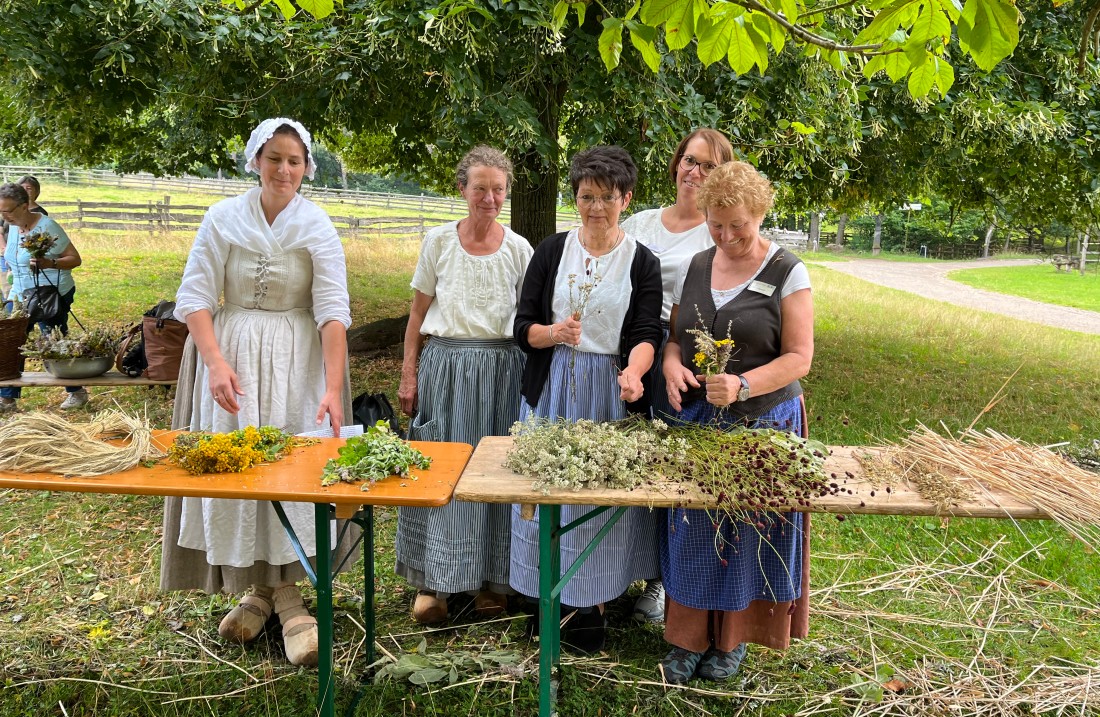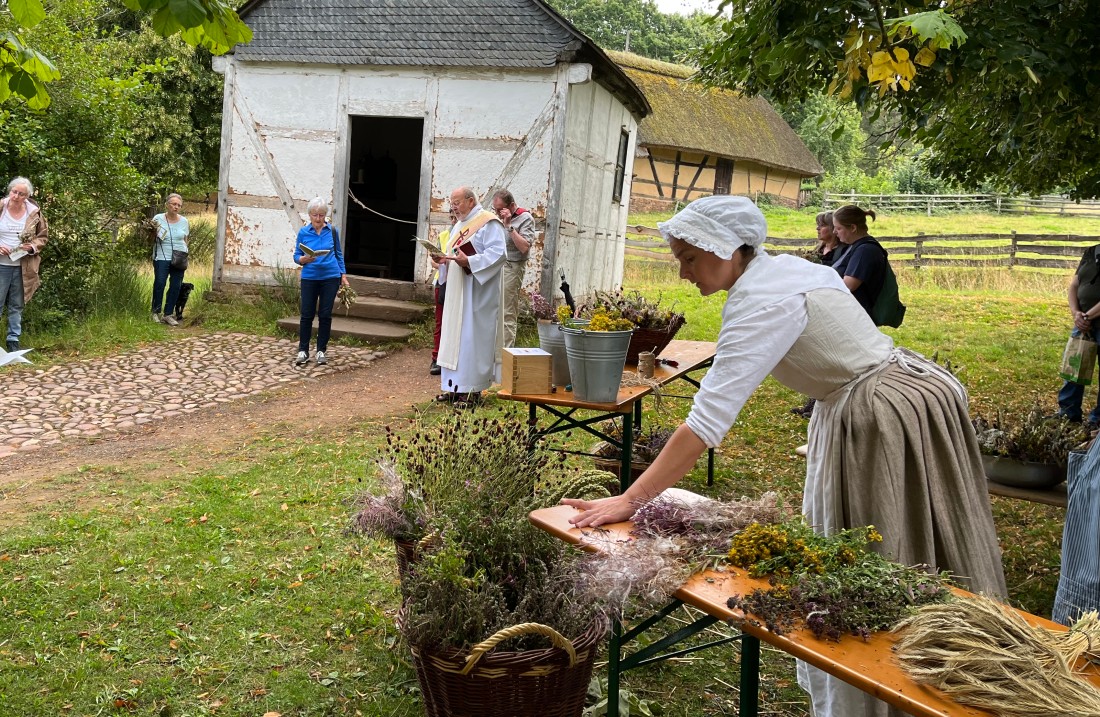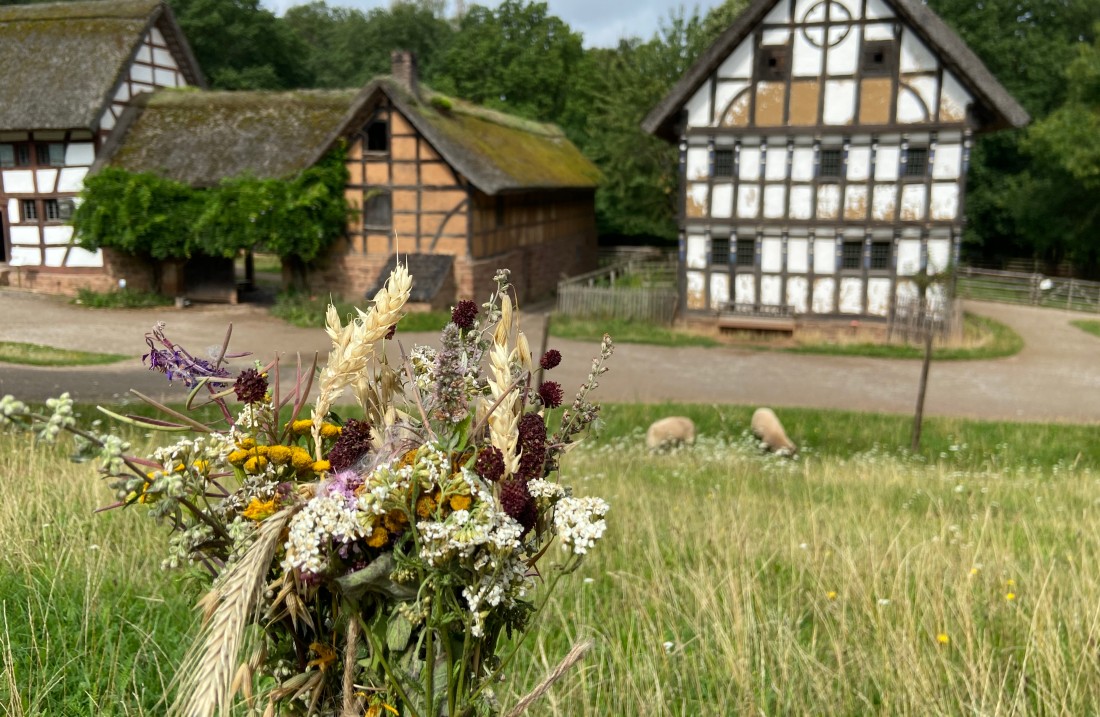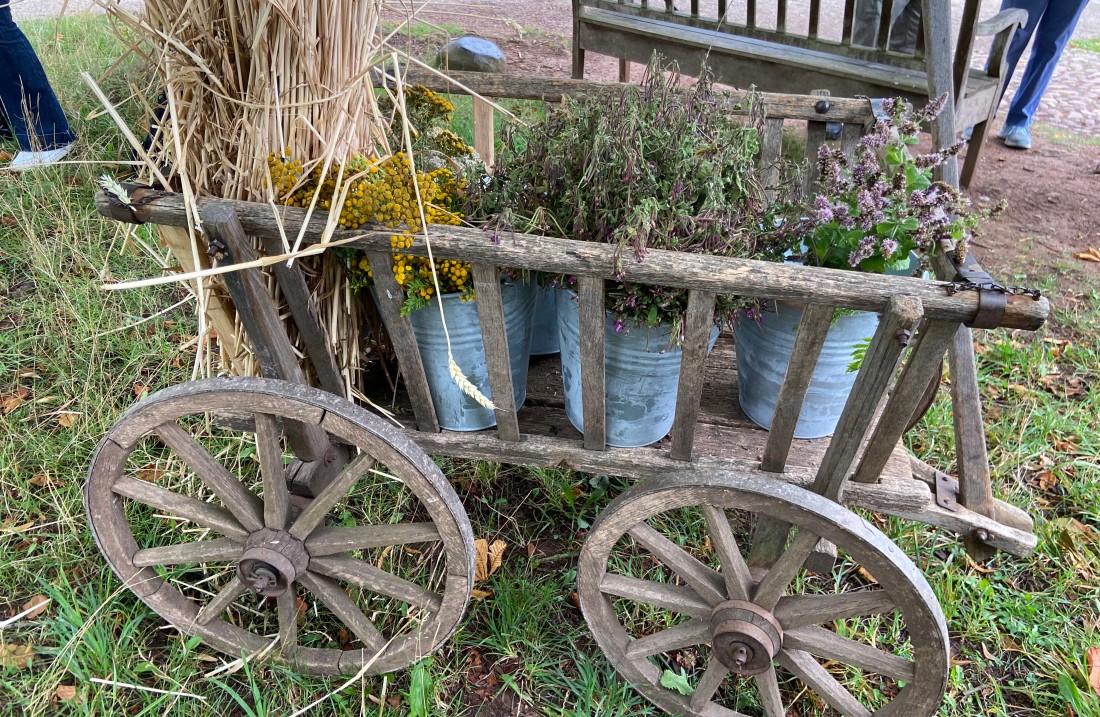Herb wipe day
August 15, 11 a.m. to 5 p.m.
On August 15, when the Catholic Church celebrates one of its most important festivals, the Assumption Day, the open-air museum commemorates the traditional Krautwisch Day. Since the Middle Ages, bouquets of herbs have been tied and blessed in church on the Assumption of Mary. Until a few decades ago, the custom was still widespread in rural regions of the Rhineland. Today it is almost forgotten.
On this day, the museum housekeepers tie the "Krautwisch" according to the old custom. The herbs will be blessed again this year at a small open-air service in front of the chapel in Schützendorf in the Eifel district. Depending on the region, the bouquets contain between seven and 99 different herbs.
In addition to tansy, wild oregano, St. John's wort, willowherb and large meadow smut, the four main types of grain rye, barley, wheat and oats are also part of this in Kommern. He should protect people and cattle from disease, fire and other misfortune. When people or animals were ill, parts were used as tea or infusions. In the spring, the house and stables were smoked out with a herb wipe. The herb wipe was not only a house blessing, but also a long-lasting house decoration. It was also considered protection against storms. During thunderstorms, some twigs were burned in the hearth. Last year's "Krockwösch" was not simply thrown away, but entrusted to the fire.
When a house was built, sacred herbs were placed under the doorstep. This should keep bad luck away from the house and its occupants. The housekeepers of the museum collect the available herbs and also tie small bouquets of herb wipes for the visitors. They are happy to provide information about the composition of the bouquets and the importance of the herb wipe custom in the region.
On August 15th you can watch between 11am and 5pm in the Eifel building group and learn more about this custom.
August 15, 11 a.m. to 5 p.m.
On August 15, when the Catholic Church celebrates one of its most important festivals, the Assumption Day, the open-air museum commemorates the traditional Krautwisch Day. Since the Middle Ages, bouquets of herbs have been tied and blessed in church on the Assumption of Mary. Until a few decades ago, the custom was still widespread in rural regions of the Rhineland. Today it is almost forgotten.
On this day, the museum housekeepers tie the "Krautwisch" according to the old custom. The herbs will be blessed again this year at a small open-air service in front of the chapel in Schützendorf in the Eifel district. Depending on the region, the bouquets contain between seven and 99 different herbs.
In addition to tansy, wild oregano, St. John's wort, willowherb and large meadow smut, the four main types of grain rye, barley, wheat and oats are also part of this in Kommern. He should protect people and cattle from disease, fire and other misfortune. When people or animals were ill, parts were used as tea or infusions. In the spring, the house and stables were smoked out with a herb wipe. The herb wipe was not only a house blessing, but also a long-lasting house decoration. It was also considered protection against storms. During thunderstorms, some twigs were burned in the hearth. Last year's "Krockwösch" was not simply thrown away, but entrusted to the fire.
When a house was built, sacred herbs were placed under the doorstep. This should keep bad luck away from the house and its occupants. The housekeepers of the museum collect the available herbs and also tie small bouquets of herb wipes for the visitors. They are happy to provide information about the composition of the bouquets and the importance of the herb wipe custom in the region.
On August 15th you can watch between 11am and 5pm in the Eifel building group and learn more about this custom.











